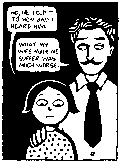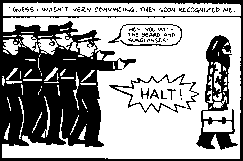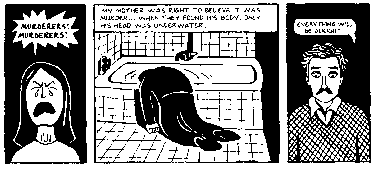Like a River
Through My Deams
Nasdijj
(Mariner)
Thus we read Hemingway and begin to write in short, pithy sentences. We may go through our Henry James stage, so our sentences turn convoluted, as convoluted as the minds of characters we are trying to show.
If we fall in love with Sherwood Anderson or H. G. Wells, we begin to carve our sentences, trying to wring as much emotion as possible out of each neutral, carefully pressed word.
And if we find a writer who speaks directly to the heart, those of us who have too much passion (for our own good) will go through considerable trouble to read anything and everything that the author has laid out on the page. This happened to me thirty years ago with Nabokov. I recall my fascination with Lolita which might have had something to do with the name, a perfectly respectable Latino name until he got hold of it. After discovering that it was more than a book about off- Long ago when I was in my Salinger phase --- I was slightly older than Holden Caufield --- I took the trouble to hole up in the library for a week or so to look up the author's earlier stories, ones that had appeared in such varied places as Stag, Collier's, Cosmopolitan, Mademoiselle, and Good Housekeeping (Good Housekeeping!) These were all truly wretched, and I felt for Salinger (and for myself) even as I went to such trouble to dig up trash like "A Young Girl In 1941 With No Waist At All" that appeared in Mademoiselle in May of 1947, and the dual, deadly "Soft Boiled Sergeant" and "The Last Day of the Last Furlough" which appeared in The Saturday Evening Post, and "The Heart of A Broken Story" in Esquire. Once I subjected myself to the most dreary of them all, "This Sandwich Has No Mayonnaise" --- oh, Jerome! --- which turned up in the same magazine in October of 1945. I finally gave it up, and understood, well understood why Salinger came out of hiding enough to sue a small book company that some time ago presumed to issue these ghastly stories without his permission.
It certainly is more rewarding than "The Last Day of the Last Furlough." One can see there the genesis of Nasdjii's style, the style that made The Boy and Dog such a work of art. We meet here, three different ur-characters to the boy Awee --- the young man with AIDS who is at the heart of The Boy and the Dog. Stylistically, Nasdijj's writing consists of short Hemingwayesque sentences and, at the same time, a Jamesian circling about a character that reveals --- a slowly developing photograph --- friends like Mary Potato, Maxine, Navajo Rose, Codetalker, Mose Zah, and Tommy Nothing Fancy: the last being another of the templates for Awee. The writing is filled with affection for the world of the Navajo and Native Americans in general. There is the truth of growing up in a family of alcoholics, suffering --- as Nasdijj does, as most of his young charges do -- with FAS (Fetal Alcohol Syndrome), a disease that slows down learning, creates frustration and violence, fomenting children who are difficult to care for. The book turns all the clichés that we have about Native Americans on their heads. Yes, Nasdijj shows us the drinking and car bodies on the lawns and shootings and knifings and thievery. But he also tells of the ceremonial life (still not lost) and delves into the grim history of the collision between the Spaniards and the Indians in the 16th and 17th Centuries, most especially the coming of Don Juan de Oñate. 300 years before King Leopold II devastated the Congo, 400 years before Bosnia's ethnic cleansing, Oñate indulged in the chopping off of hands and feet of innocent Indians, all done in the name of God's wrath as visited on the heathens. There is a statue of Oñate in Alcade, New Mexico. Nasdijj's friends Roy Laughter and Jimmy Dog decide one day to commemorate the rapine of Oñate by cutting off one of the feet of the statue. And they do. The Blood Runs Like a River Through My Deams is clearly immediate predecessor to The Boy and The Dog, but it stands on its own --- in anger and in love, depicting honestly the spirit, woe, and despair of the world of the Southwest Native Americans. We have previously given high praise to The Boy and the Dog Are Sleeping by Nasdijj. Thus we went out and ordered and actually paid (a reviewer buying a book!) for The Blood Runs Like a River through My Dreams, which was published a couple of years before.
Marjena Satrapi
(Pantheon)

 But the twist is that all this teen-age stuff is intermixed with a scene helping to dump her dad's wine down the toilet because the fundamentalists will be coming to search the apartment, having the "Guardians of the Revolution" call her a "little whore" because her scarf doesn't hide her hair, and worst of all, knowing that some of her young Iranian boyfriends will be going to the front where they will be given be given "keys to paradise" (plastic keys painted gold) as the fundamentalists tell them
But the twist is that all this teen-age stuff is intermixed with a scene helping to dump her dad's wine down the toilet because the fundamentalists will be coming to search the apartment, having the "Guardians of the Revolution" call her a "little whore" because her scarf doesn't hide her hair, and worst of all, knowing that some of her young Iranian boyfriends will be going to the front where they will be given be given "keys to paradise" (plastic keys painted gold) as the fundamentalists tell them
that if they went to war and were lucky enough to die, this key would get them into paradise ... and in paradise, there would be plenty of food, women and houses made of gold and diamonds.
It is this intermix of innocence and childhood alongside war, hostility, and fear that makes Persepolis hard to put down. From the very beginning, Mari and her friends are shown complaining about having to wear the veil at school: the panel shows them playing jump-rope with them, mock-choking friends with them("Execution in the name of Freedom,") and using them to play horsey. At the very end, Satrapi is shown getting on an airplane from Mehrabad Airport to Vienna, leaving her beloved father, mother and grandmother behind.
The reason --- Meri sounded off in class:
You say that we don't have political prisoners anymore. But we've gone from 3000 under the Shah to 300,000 under your regime.
When she arrives home, her mother explodes, telling her that she may be arrested. "You know that it's against the law to kill a virgin... So a Guardian of the Revolution marries her... and takes her virginity before executing her. Do you understand what that means?"

No one gets off easy in Persepolis. We are reminded in the introduction by the author that the CIA and the British organized a coup against Mohammed Mossadeq and installed the Shah, Mohammad Reza Pahlavi. During the course of the book, we are also reminded that
The Germans sell chemical weapons to Iran and Iraq. The wounded are then sent to Germany to be treated, veritable human guinea pigs.
Victims are everywhere in Persepolis, but such is the nature of a comic book, and the wimsical style of Ms. Satrapi, that we end up being, like her, both appalled and guardedly amused at the whole dreadful business.
--- Leslie Winfield